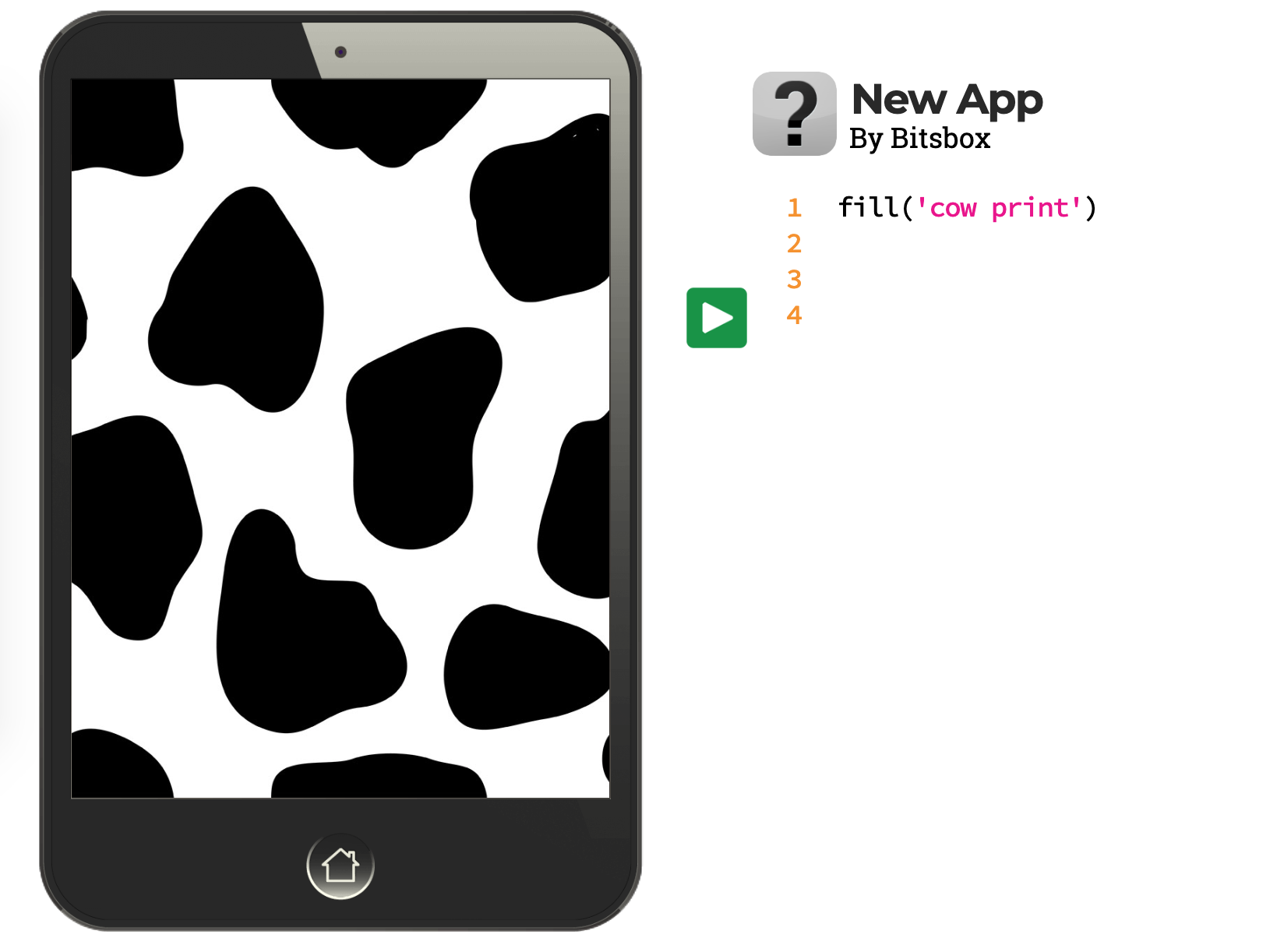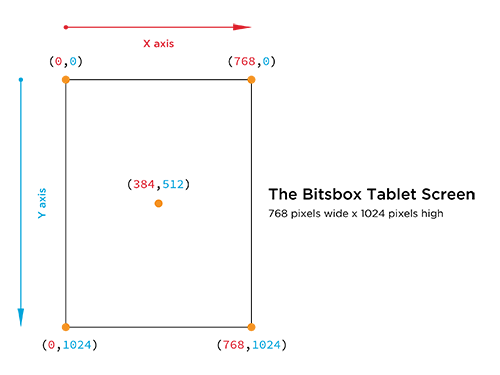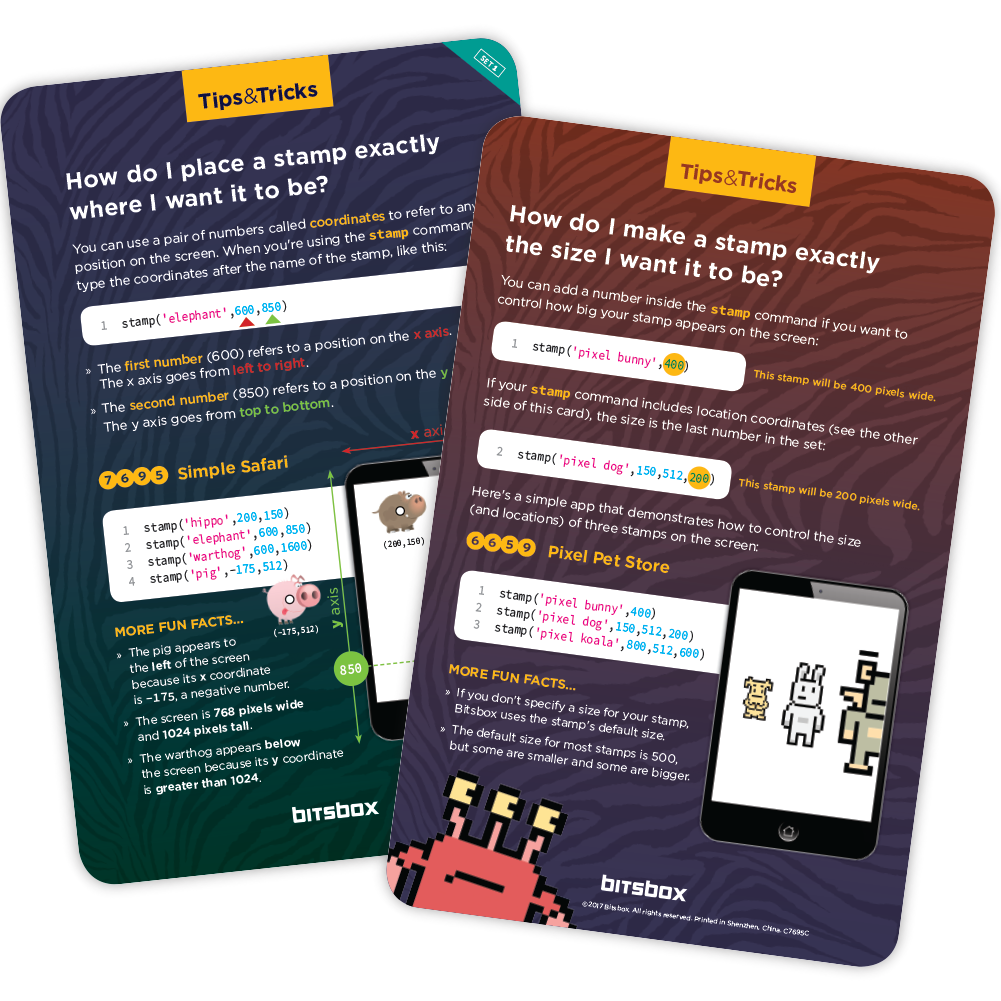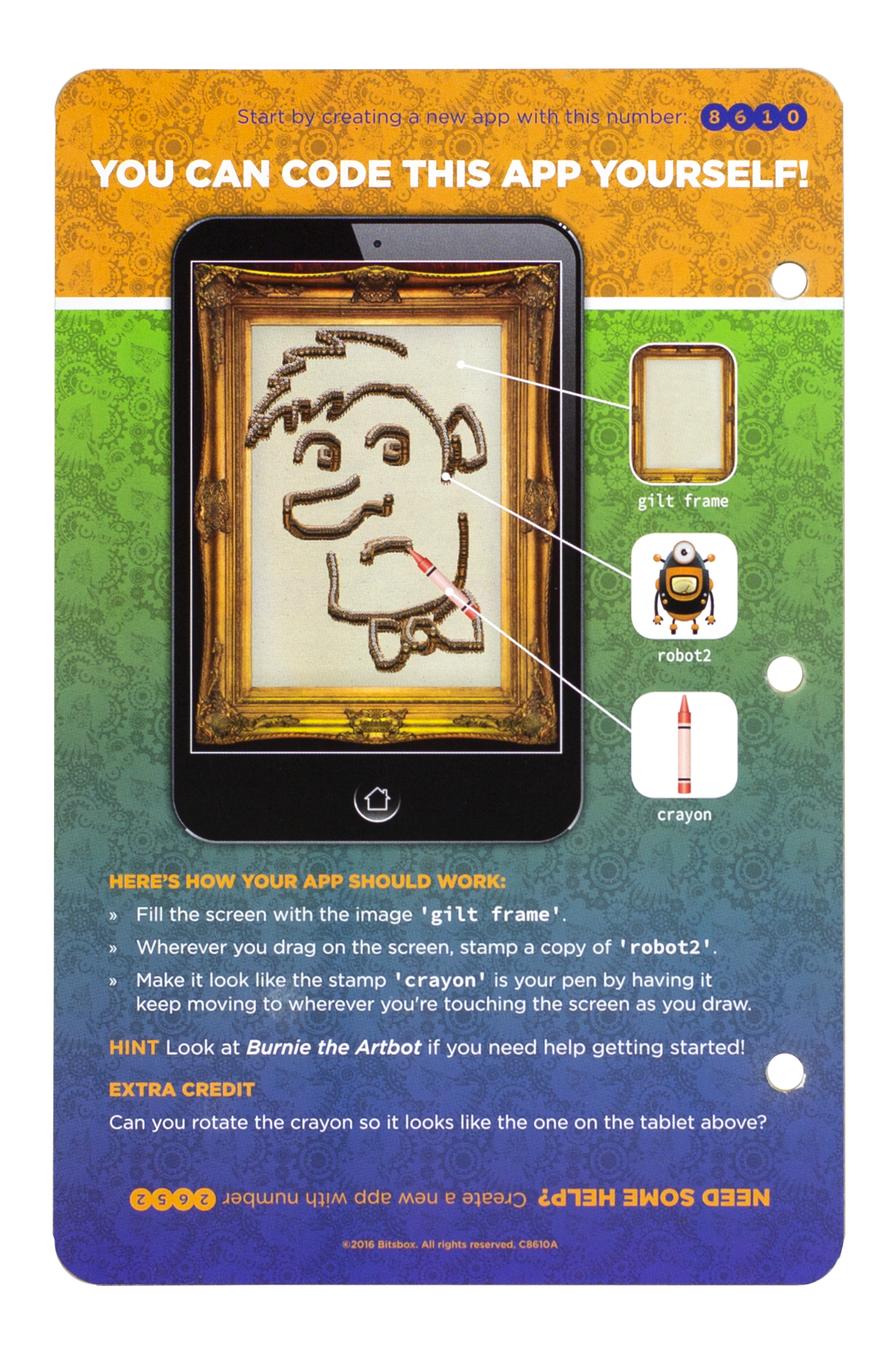Bethany is a mom, blogger, and homeschooler with a passion for making math fun, interesting, and relevant. She runs Math Geek Mama, where she shares engaging math materials and strategies, so other parents can feel confident about raising strong thinkers and problem solvers.
We set her up with a 3-month Bitsbox subscription so she could try it as computer science curriculum in her own homeschool. Below, we’ve condensed the 3 blogs she wrote detailing her and her daughter's experience with Bitsbox. You can read the full posts starting here!

Month 1: Introducing Bitsbox
Did you know there are 2 million apps available to purchase in the iTunes app store? Computer programmers and software developers designed these apps using a computer language such as Javascript, HTML, Objective C and others. In our increasingly technological society, raising kids who are computer literate is essential. Can you imagine if you child left for college already knowing how to write programs and apps in Javascript? Well, today I'm excited to share the first in a series of posts reviewing a simple way to teach kids to code. It doesn't even require you know coding yourself!
Bitsbox is a website where kids as young as six can learn computer programming.
It's also a monthly subscription box which includes tons of fun coding exercises that kids can type up themselves and then customize.
Each of the coding challenges include bits of code written in JavaScript, which kids type up themselves and can then change or customize to make it their own.
First Impressions
I honestly had no idea what to expect when we first opened the box, and had no idea how my daughter would like it.
But I have been overwhelmed, not only by her response and enthusiasm to the challenges, but also thrilled with what she's learned so far!
When I began looking over the challenge cards, I realized that she would simply copy the given code into the Bitsbox website. This made me skeptical that she would actually learn coding. After all, she's just copying it. The hard work has already been done.
But as we've continued to learn together and explore the different apps together, I've realized several things.
First, the repetition of typing various commands again and again has taught her what they mean and what they do.
For example, the code: fill('ocean') tells the app to fill the screen with an ocean background.
You can then substitute the word 'ocean' with colors or other background images available in Bitsbox. She understands this now, and tweaks the code to make it her own.

 The Bitsbox Library has thousands of backgrounds and other assets to choose from!
The Bitsbox Library has thousands of backgrounds and other assets to choose from!
Second, each app includes challenges which require kids to take the given code and change it (such as changing the background color, moving things around or adding different sound effects).
So after only a few weeks, my daughter (who's 8 years old) has quickly picked up a lot of coding skills.
The other thing I love about this program is that we have access to the website for free, and can continue to use the cards and online apps forever.
This means I can use these same apps and materials to teach my younger kids as they get older and begin to have an interest in coding as well.
In addition, each subscription box is themed, with the first being an "animal" theme. This box came with not only the Super Cards full of app challenges, but other fun animal-themed goodies such as stickers and origami animals. It also included a set of trading cards, with more app challenges.
This made it fun and exciting for my daughter to go through, and she's already looking forward to the next box.
Learning Coordinates
The first box also focuses on a specific coding skill. The focus of this set is on coordinates.
This is similar to plotting coordinates on a coordinate plane, using an x and a y.

The coordinates tell the computer where to place an object on the screen. Bitsbox included a simple explanation card for kids (and grownups) to help them understand.
Then each of the apps provide practice with using coordinates to precisely place objects.
As I've been talking with my daughter about her challenges so far, she was excited to tell me that she's figured out the coordinates and how they work.
Her initial struggle was not understanding that the coordinate was the center point of an object. This meant sometimes she would try a set of coordinates and it wouldn’t work out just right.
But with some practice, she's figured it out and is able to use more precise x- and y-values to place objects exactly where she wants them to be.
And as an unexpected bonus, my daughter is also learning how to type on a keyboard. She has never spent much time using the computer or learning how to type, but the more she types up computer code, the more familiar (and faster) she's becoming.
Get Started with Bitsbox
To get started, all you need is a computer with a keyboard (desktop or laptop).
You can then go to the Bitsbox website and pull up the coding screen for your child to begin typing up their apps.
You can even set up a "kids account" so that they can save all of their work to come back to later.
After your child has built an app and customized the code, you can then download it to your phone or tablet and they can use it and play it just like any other app!
Except they built it themselves!
My daughter has loved this so much so far, and loves showing off her skills to the grandparents. And I love that she's excited to learn computer programming.
One final note for all you parents who don't know anything about coding...
Although I was required to take a class on computer programming as part of my math degree, I did not enjoy it and did not learn much.
But the creators of Bitsbox have not only made coding fun, they've kept it simple, making it a great way for parents and kids to learn code alongside one another.
The box includes helpful explanation cards and Tips & Tricks cards to help you familiarize yourself. Plus, there's a very extensive Grownup Guide to get you started.

An example of what Tips & Tricks cards look like!
If you have no previous experience with computer coding, I highly recommend reading through the guide and testing out a few apps yourself before handing it over to your kids.
This will help you feel more confident explaining things to them and helping them troubleshoot when something's not coded just right.
Then, you can really be as hands-on or hands-off as you want! I've had fun learning some things with my daughter and helping her make sense of the code snippets, but at this point, she's able to pick it up and go without any assistance from me.

Month 2: Building on the fundamentals
My daughter (8 years old) is now in her second Bitsbox, which introduces some new skills and builds on the coding fundamentals that she learned with the first box.
Whereas the focus on the first box was learning how to place objects on the screen and understanding coordinates, she has now begun to learn how to make those objects move.
So far I have enjoyed the way the challenges begin very simply, and provide lots of practice with specific skills.
But they're so fun and engaging, my daughter really doesn't seem to realize that she's practicing certain coding skills again and again in different ways.
What's New in Box #2
While my daughter is to the point where she’s able to code apps on her own using the Bitsbox challenge cards, as the tasks get more complicated, I'm having to be a little more involved.
If this intimidates you, please know that there are lots of helpful resources for parents on their site, and the Tips & Tricks cards offer thorough explanations so you can understand and better help your child.
After reading and learning the new concepts with your child, they can then code the different apps to practice this new skill.
My daughter also recently began trying to code apps from scratch.
This means the challenge is given (what you want the app to do) and she has to code the entire thing herself without copying code that's provided.
This is where she is starting to need my help.
The great thing about these challenges, however, is that hints are given, and other examples are available to look at to give you a starting point.
For example, in Box 2, there's an app to code which allows you to draw with a robot as you drag it around the screen (and all the lines of code are given, you just copy them).
Using that as an example, my daughter and I worked together to code an app (from scratch) where she draws as a robot when she drags her finger on the screen.
 The challenge app, Draw With Droids.
The challenge app, Draw With Droids.
Learning Programming by Experimenting
One of the best ways that she has been able to learn what bits of code do is to experiment.
This simply means typing up the code for an app, then changing some of the numbers to see what happens.
Especially now that she’s trying apps with a move command, it’s often helpful to change out things in the code to see what changes with the app.
For example, if you make one number bigger, does it change the size of the stamp or the speed that they move?
This helps her learn what each bit of code does for when she's ready to try and code another app from scratch.
Some Tips for Learning Coding with Bitsbox
Now that we've got a couple of boxes worth of cards and challenges, I want to share some tips for making the most of this unique learning experience.
-
First, when you receive your binder for your challenge cards, keep the cards in order (at least until your child is comfortable with the coding they've learned so far).
Because the challenges build on each other, it's helpful to have them in order so if it's been a while since your child has practiced, they can go back to the simpler apps and review what they know.
You may also want to keep all the Tips & Tricks cards together at the front or back of the binder for easier reference.
-
Second, if your child is serious about learning computer programming, set a goal of practicing 15-20 minutes a day.
Experimenting with the apps for an hour one day and then not looking at it again for a week or more is not going to help them form connections and retain what they're learning.
Shorter, consistent practice will be better in the long run. I've started adding Bitsbox to my daughter's daily school assignments page just as a way to remind her. (But please know that she doesn’t see Bitsbox as a school or homework assignment, she sees it as a fun game to play with.)
This will help them understand the basic fundamentals of programming and get them ready for greater challenges.

Month 3: Customizing and Coding from Scratch
I want to share the progress my daughter has made over the last 3 months. It has been a joy to see her excited and engaged while learning JavaScript, and my son (a year younger) is now very interested in trying it out as well. If you're looking for a fun way to teach or introduce coding to your kids, I hope you will check out this entire series to see what Bitsbox has to offer.
This month, we've been working through our third box, with challenges that are becoming increasingly more difficult than the ones in the first box.
What's New in Bitsbox #3
As I've mentioned, each box has a fun theme, and this month the theme was A Land Far Away. It included fun fairy-tale like challenges, characters, and background fills.
My daughter loved this theme, and has enjoyed the magical types of challenges.
The boxes also include a tracking card with fun stickers, so she can mark off challenges as she completes them. She really enjoys this!
Coding-wise, there are a couple of new skills introduced in this box:
First, she has learned to create an array (a list) to enable different choices of backgrounds or characters.
Second, this box introduces if/else statements, which are an important building block in computer programming. This allows conditional types of options into the program.
For example, if you want a character to change if a certain condition is met (say you want the frog to change into a prince if you tap him), but otherwise to stay the same (or change into something different) you would use an if/else statement.
In other words, you're telling the app "If this is true, do this." "If this is NOT true, do this."
Progress Made Over Three Months
My daughter is still loving the coding challenges, and has learned so much thanks to Bitsbox.
I love that even as the apps get more challenging, they're still kid-friendly. After coding an app, my daughter (and often my other kids as well) will play with it over and over, tweaking things to change the character, sounds, etc.
She's also getting better at coding apps from scratch. She still needs my help, but she can often come up with the code (or pieces of code) to try on her own.
She's also improved a great deal at catching mistakes. When typing up the code, if you don't type something correctly, even so much as a missing parentheses, the code won't work.
Initially, this frustrated her a great deal. But as she continues to practice and learn, she's better able to look for specific, common errors, and spot silly typos.
I'm so impressed to see her catching her own mistakes, because this can be one of the most difficult parts of computer programming: thinking you've completed the code, only to discover it doesn't run properly.
Now that she has a binder full of cards with app coding challenges, as well as tons of trading cards, she's keeping quite busy. There are still a lot of apps that she hasn't coded yet, so she'll be working her way through them.
She's also going to start teaching her brother how to type the code and play with the apps. I love that combining the Bitsbox website with the app challenges means my kids can continue to practice coding.
If you're looking for fun and engaging app coding for beginners, definitely check out Bitsbox!


